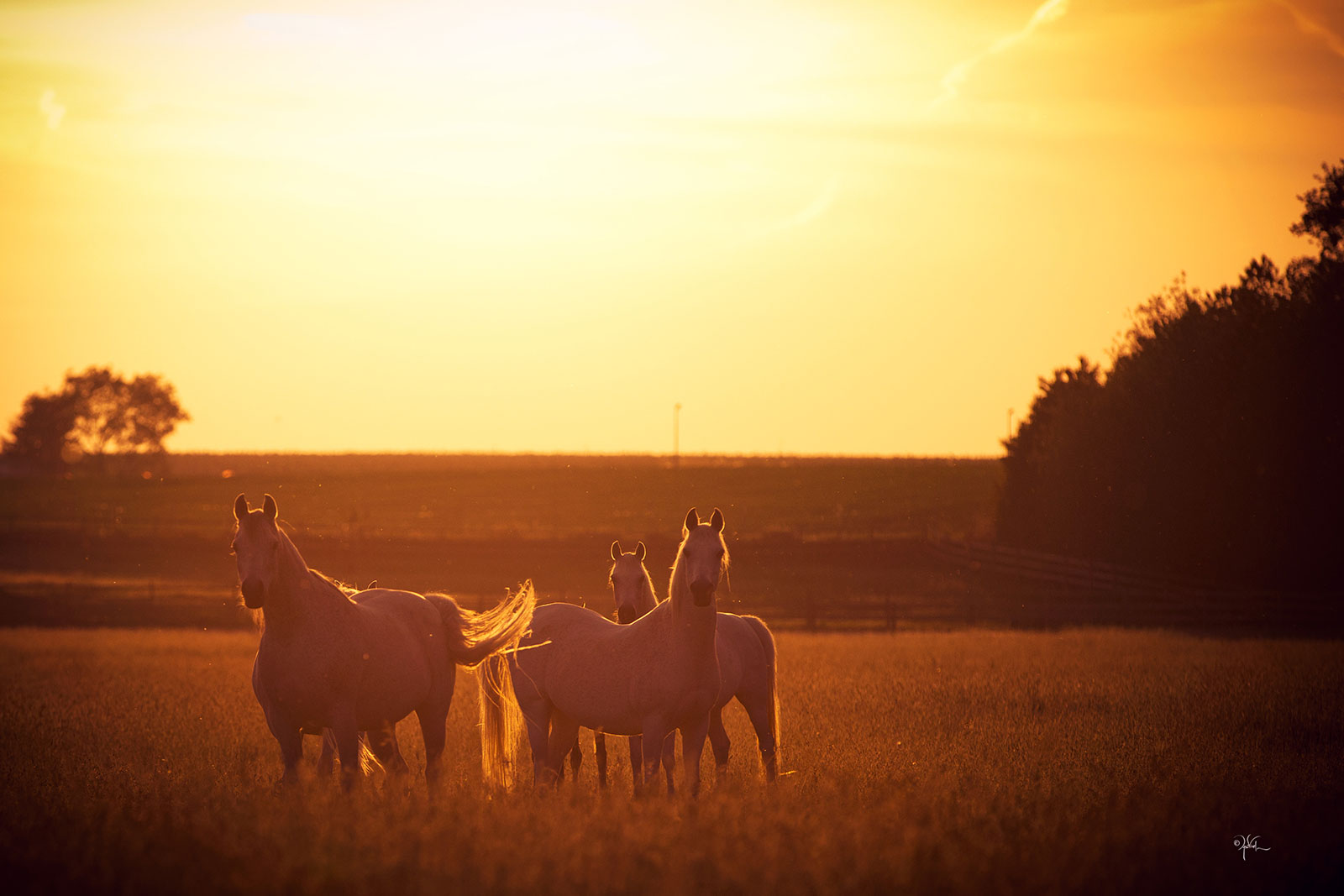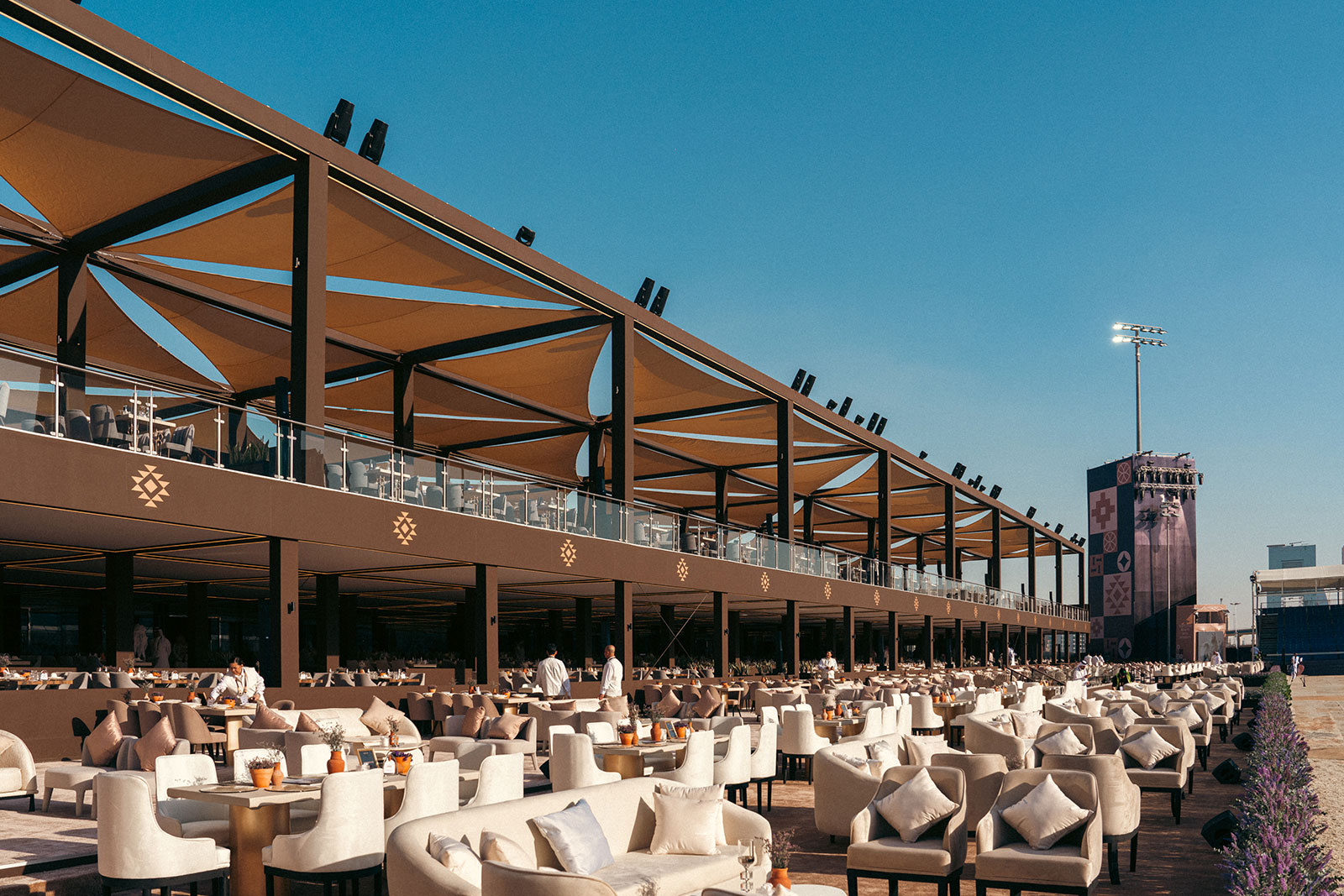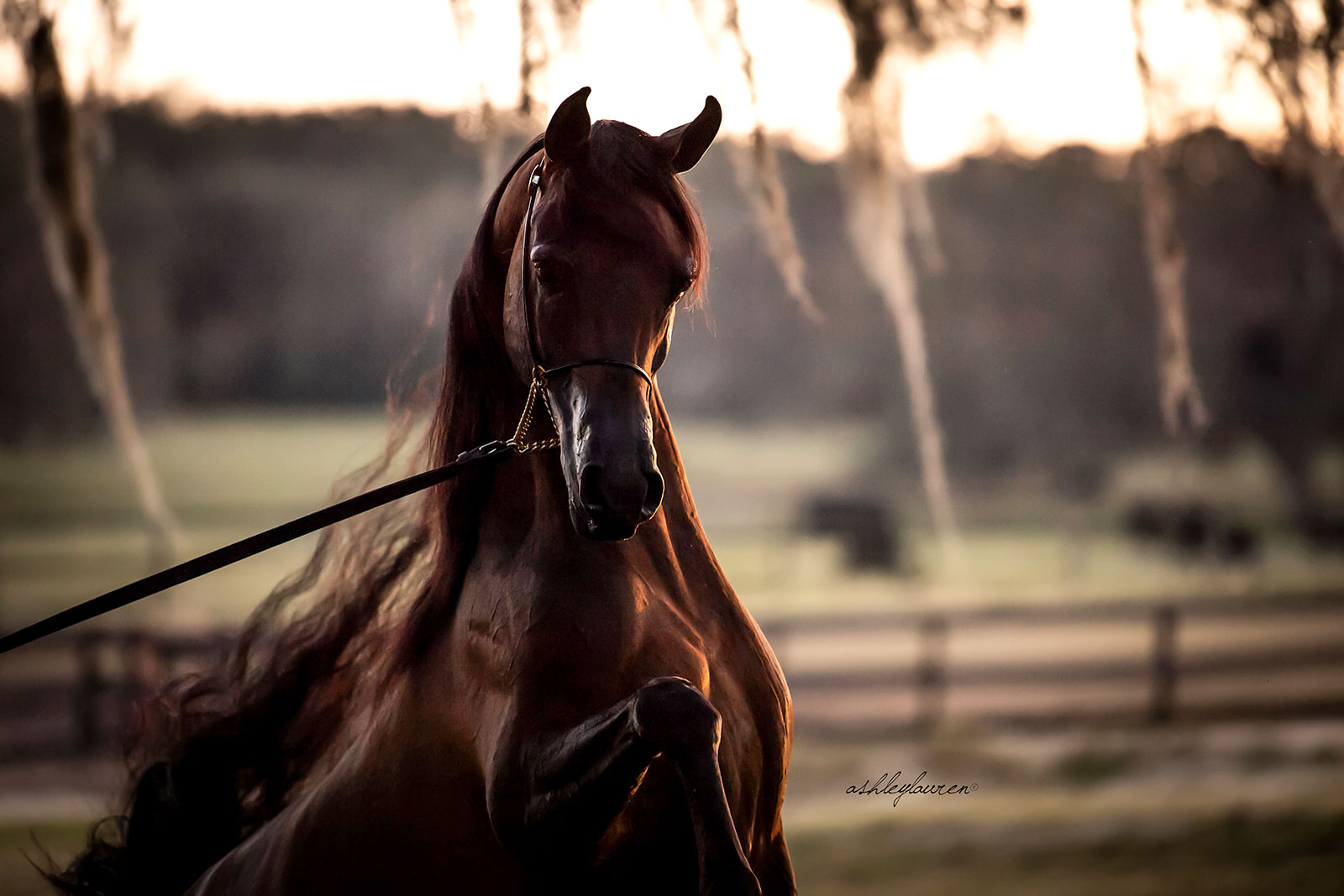By Cindy Reich
As featured in the September 2006 Issue of Arabian Horse World.
This summer will go down in the record books as the hottest since records began for most areas of the United States. While humans might seek out air conditioning or swimming pools, our horses aren’t as lucky. During the recent extreme heat wave in California, a friend reported to me that her veterinarian had to put down 23 horses for heat-related problems.
Do you know the signs of heat stress in horses? Heat stroke? Anhidrosis? We’ll take a look at a number of heat-related problems that can affect your horse.
The normal temperature of your horse should be between 99.5 and 101.5°F (37.5-38.5°C). When a horse is undergoing heat stress a cascade of events can be set in motion. The horse’s respiratory rate will increase and the circulation of blood will increase, dilating blood vessels. The horse will sweat as the body strives to reduce heat through evaporation both by increased breathing and by sweating. The blood vessels dilate both in response to the increased blood flow, but also to cool the blood by convection. If the horse is being ridden or worked, these symptoms may not cause alarm at first. However, as the heat stress increases, the horse may show signs of an abnormal gait, or may stumble or fall. Core temperature may go as high as 106°F. If the horse is not cooled down immediately, it can suffer heart, kidney, neurological, and other systemic damage from the effects of sustained high core body temperature. If the temperature reaches 107 to 108°F, the horse will likely die or sustain neurological damage.
Signs that might indicate heat stroke include panting, irregular heart rhythm, increased respiration rate, excessive sweating, or in the case of anhidrosis or severe dehydration, a lack of sweat or patchy sweating. If your horse is exhibiting any of these signs it is imperative that you call your veterinarian. Take your horse’s temperature and move the horse to a shaded area with good air circulation or a fan and begin to cool it down.
Use a hose to cool the horse down with cold water. Hose between the front legs and between the hind legs where major blood vessels are located. Cooling down the blood flowing through those vessels will lower the horse’s body temperature. The same applies to the horse’s neck and head. If you don’t have access to a hose, use buckets of water.
Avoid placing cold towels on the horse’s neck or head unless changed VERY frequently. Leaving a towel on the horse will cause further insulation as the towel heats up and will impede the horse’s ability to cool down. Ice packs can be placed on the head or on the neck to facilitate cooling. There has been controversy about placing ice on horses suffering from heat stroke, as it could potentially cause cramping of large muscles. However, a number of sources have reported using ice packs on horses suffering from heat stroke with no ill effects.
A solution of one-half rubbing alcohol and one-half water sponged over a hot horse will also result in increased evaporation and can help lower its temperature. Monitor the horse’s temperature and continue cooling efforts until the temperature is below 104°F.
Your veterinarian will likely administer fluids to the horse as well as electrolytes, depending on the severity of the case. The horse should be placed in a stall with a fan or in a cool area with good air circulation. Depending on the severity of the case, the horse may need to be monitored for kidney function, liver function, and neurological status. If caught and treated early, the prognosis is good. If the heatstroke is severe and prolonged and involves organ damage or neurological damage, the prognosis can be poor.
What Can Be Done to Reduce the Chance of Heat Stroke?
First of all, don’t work your horse in extremely hot or humid weather. When a horse works hard in these conditions, the sweat glands may become overwhelmed, resulting in anhidrosis (inability to sweat). Without the ability to cool the body temperature by sweating, the horse’s core body temperature will soar and the cascade of events to the body’s system will be set in motion. I remember many years ago, working at an Arabian horse farm in southern Louisiana. I was conditioning a halter string and one of the halter horses was a gorgeous pure black two-year-old filly. Our usual protocol was to lunge the horses in a neck sweat until they had a good sweat going and until the large gluteal muscles in the hindquarters started to “wobble.” This indicated that the small muscle fibers were being torn down to be replaced by increased muscle mass as the work progressed over time.
This particular filly was worked for the first time for only about ten minutes or so (fortunately), gradually working up to about 20 minutes. It was only by pure dumb luck that this was going on in the autumn rather than high summer, or we would probably have had a dead filly after a few sessions. I noted that the filly was not sweating — not only not anywhere on her body, but not even under the neck sweat. At the end of the session she was breathing heavily and I became concerned. I rinsed her with cool water and a liniment rinse and called the vet. By the time he arrived her breathing still had not lessened and when he took her temperature it was very high. It didn’t take long to come up with a diagnosis of anhidrosis. Needless to say, this filly’s work protocol was drastically changed, but she was allowed to exercise lightly at the coolest part of the day and was successful in the showring. Fortunately, she was retired from showing early and was sent to a much cooler part of the country to resume life as a broodmare.
It is not uncommon for horses to develop anhidrosis in humid, hot areas. Therefore, regardless of whether your area is having a short heat wave or a prolonged one — if you live in an area that is normally hot and humid, your horses are more at risk to develop this condition — which must be managed carefully to avoid heatstroke.
Horses that are out of shape are also at high risk for heat stress if worked in extremely hot conditions. Avoid work except for short periods in the cool of the evening or early morning until the weather is cooler. Foals are also less tolerant of hot weather than adult horses. Keep them from overexertion in hot weather. Monitor them closely.
Any horse that has suffered from heatstroke or anhidrosis should not be worked for several weeks and should be started back to work very slowly and under cool conditions. Once a horse has suffered heatstroke it is very susceptible to a recurrence.
Make sure your horse has access to shade, good air circulation, and abundant COOL water. Horses confined to stalls that do not have good air circulation should be provided with fans.
Geriatric horses, particularly those with Cushing’s syndrome, may have long hair coats — even in summer — and should be body clipped or hosed regularly so that they don’t overheat. Elderly horses don’t have good body temperature regulation anyway, so they should be monitored carefully.
During these prolonged heat waves, consider turning horses out in the evening and make sure they have shelter during the hottest part of the day. Rinsing the horses off several times a day will make them more comfortable. There are misting hoses that can be put on a fence to mist the horses periodically. Misting fans are also available.
Water, Water Everywhere …
Water is essential to your horse, regardless of the weather. In extremely hot weather, your horse may easily drink 20 to 25 gallons of water per day. In addition to the water, the horse needs electrolytes. Failure to drink an adequate amount of water can disrupt the electrolyte balance. Therefore, not only should you make sure your horse is drinking enough water, but it should be provided with salt and electrolytes. Some people add electrolytes to water, which is fine if the horse drinks it. However, if adding electrolytes to the water causes the horse to drink less, you will be compounding the problem. If you suspect your horse has an electrolyte imbalance (signs may include muscle cramping, fatigue, colic), contact your veterinarian for the best way to get electrolytes to your horse. This may require intravenous fluids, direct tubing of an electrolyte solution to the stomach, or addition of electrolytes via paste or in feed.
One of the biggest problems may be getting your horse to drink enough water. In California recently, where the ambient temperature reached 115°F, many horses became dehydrated because they didn’t drink enough water. The reason they didn’t drink was because their water was too hot. Water dispensed from automatic waterers with small bowls became so hot that the horses couldn’t drink it. Metal water tanks can also become so hot that the water becomes heated and the horses won’t drink. It is critical to provide horses with cool water to drink and lots of it to prevent dehydration and possible colic from impaction.
I personally also reduce the protein content of feed to our horses in extremely hot weather. I also reduce the amount of very dry forage as well. High protein feeds can generate more body heat in the horse. While I don’t have any research to back up these decisions — I am uncomfortable with the prospect of horses’ eating large quantities of dry alfalfa, for example, when they might not be drinking enough water. I will sometimes make a watery mash of cool water and oats or bran just to get more liquid into a horse. Often, extreme heat may make horses go off feed, but failure to show interest in feed can also be a sign of heatstroke.
An unusual colic during this prolonged heat wave involved a four-month-old foal of some friends that had a severe impaction colic. However, the impaction was not from only dry feed, but also included large amounts of hair (the colt had chewed off the mare’s mane over a two-week period) and dirt and rocks. The foal had recently been weaned and it is possible that he was no longer nursing, but he also probably wasn’t drinking enough water, either.
Therefore, the take-home message is that water is the most critical element in this hot, hot summer. Check water tanks to make sure the water is cool, and check automatic waterers, especially if the reservoir is small and made of metal. Provide your horses with a daily shower or two from the hose. Provide fans and misters if the horses are confined. Any horses confined to stalls should have adequate air circulation. Turn horses out at night rather than during the day. If horses are turned out in the heat of the day, they should have shelter.
There are other problems that can occur with the hot weather. Sunburn can become an issue — especially where we live in the Rockies, where the altitude puts us closer to the sun.
If your horse has pink skin, especially on the nose or face, look for signs of swelling and reddened, cracked, or peeling skin. Putting on a sunblock daily or treating the sunburn with zinc oxide cream may be necessary. Consult your veterinarian if you suspect your horse is suffering from sunburn. Photosensitization (covered in a previous column) occurs when horses ingest certain plants that contain photodynamic substances. When the horse metabolizes them, they react with sunlight, causing the skin to slough off. Horses that have developed photosensitization will generally have skin sloughing any place (including the body and legs) where there is pink skin, which is not protected by melanin. Sunburn is generally just localized to pink skin on the face.
Autumn is near. All we can do is hold on, ride out the hot weather, and hope for cooler weather. By all means, head for the A.C. and a tall cold glass of lemonade — after you’ve hosed off your equine partners and filled up their water tank with cold, clear water!






